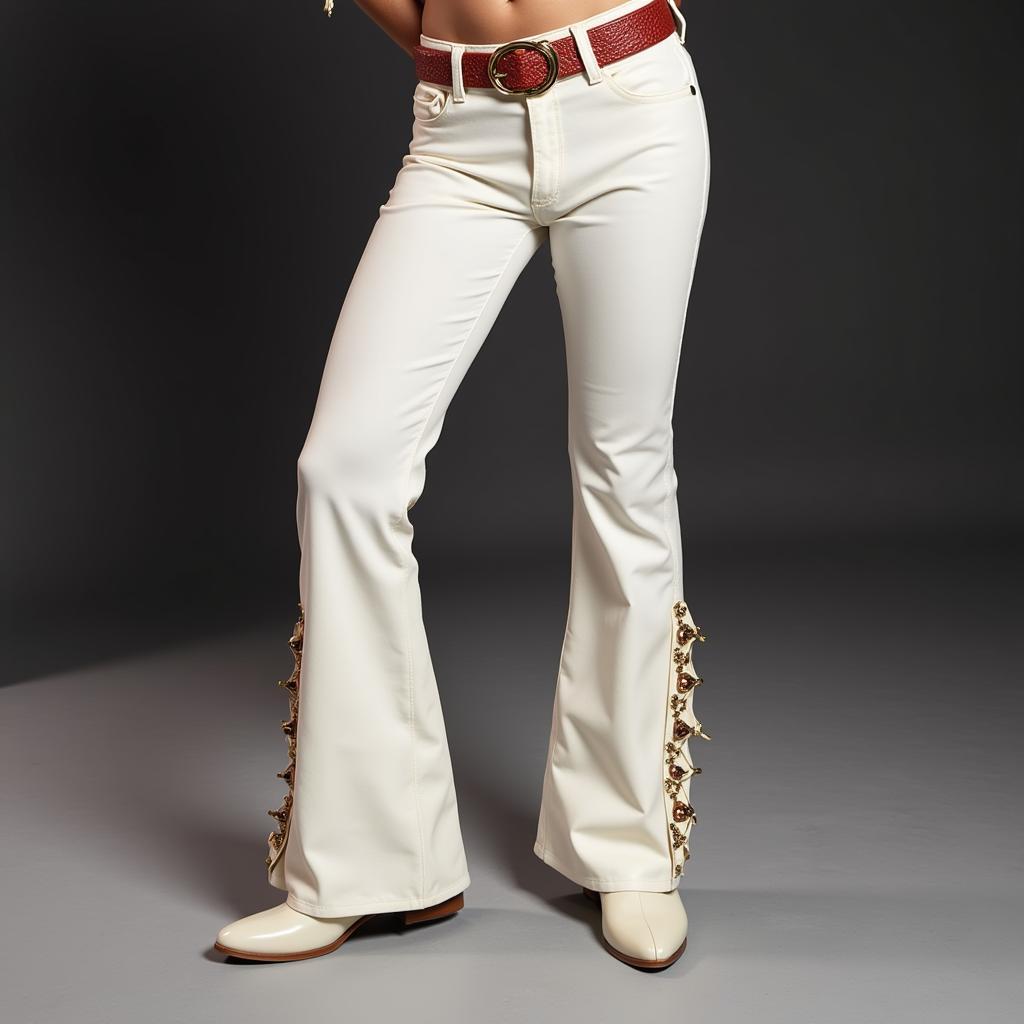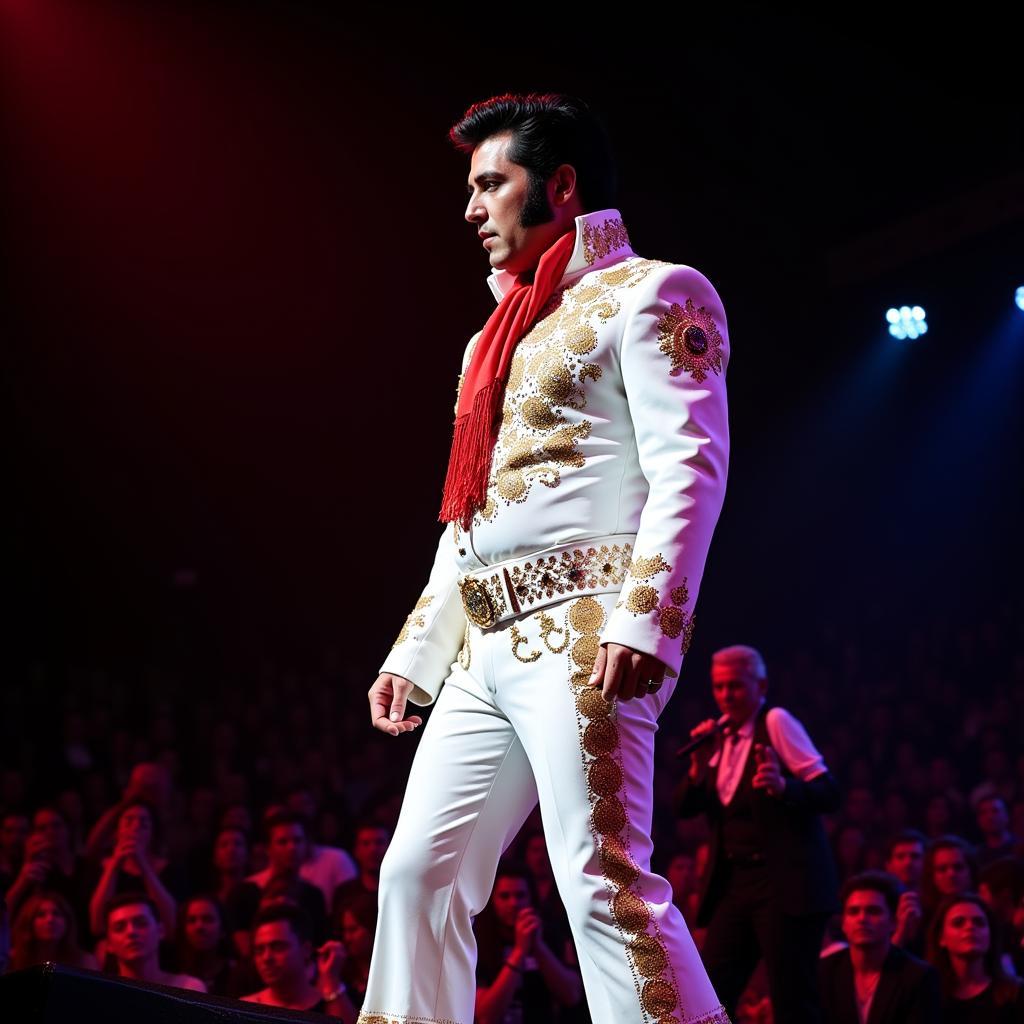The “Elvis Stance,” an instantly recognizable symbol of rock and roll, transcended music to become a cultural phenomenon. This iconic pose, characterized by a confident posture, swaggering hips, and expressive gestures, continues to captivate audiences decades after Elvis Presley first graced the stage. But what exactly makes the Elvis stance so special, and how can you master it yourself?
Deconstructing the King’s Pose: Key Elements of the Elvis Stance
 Elvis Stance Legs
Elvis Stance Legs
The Elvis stance isn’t just about mimicking a single pose; it’s about embodying a spirit of confidence and charisma. Here’s a breakdown of the key elements:
- The Legs: Slightly bent knees are crucial, creating a sense of energy and readiness to move. Feet are positioned slightly wider than shoulder-width apart, with toes pointing outward, exuding a sense of stability and swagger.
- The Hips: Perhaps the most iconic element, the hips are the engine of the Elvis stance. It’s all about subtle movements and rhythmic sways that sync with the music, creating a visual representation of the rhythm.
- The Torso: A straight back conveys confidence, while a slight lean forward adds a touch of rebellion and engagement with the audience. Relax your shoulders and let your arms move naturally.
- The Arms and Hands: Elvis was known for his expressive hands, using them to emphasize lyrics, interact with the crowd, and inject emotion into his performances. From dramatic flourishes to playful gestures, the arms and hands play a crucial role in the overall energy of the stance.
- The Attitude: The most important element can’t be taught or replicated—it’s pure Elvis. Confidence, charisma, and a touch of playful rebellion are essential for truly embodying the spirit of the stance.
Beyond Imitation: Finding Your Inner Elvis
Mastering the Elvis stance isn’t about becoming a carbon copy of the King. It’s about channeling the energy and spirit of his performance style to find your own unique expression. Here are a few tips:
- Study the King: Watch videos of Elvis’s performances, paying attention to his movements, gestures, and stage presence. Analyze the nuances of his stance and how it changes depending on the song and the audience.
- Practice Makes Perfect: Stand in front of a mirror and experiment with the different elements of the Elvis stance. Start with the legs and hips, gradually incorporating the torso, arms, and hands.
- Find Your Rhythm: Put on your favorite Elvis song and let the music move you. Allow your body to naturally fall into a rhythm, and don’t be afraid to experiment with different movements and variations.
- Inject Your Personality: Once you’re comfortable with the basic elements, start adding your own personal flair. Let your personality shine through in your movements, gestures, and facial expressions.
The Legacy of the Stance: More Than Just a Pose
 Elvis Impersonator Performance
Elvis Impersonator Performance
The Elvis stance is a testament to the power of stage presence and the enduring legacy of a music icon. It’s a symbol of confidence, rebellion, and the electrifying energy of rock and roll. While mastering the physical elements of the pose is achievable, capturing the true essence of the Elvis stance requires embracing the spirit of the King himself—confident, charismatic, and undeniably cool. So, put on your blue suede shoes, strike a pose, and let the spirit of Elvis move you.





